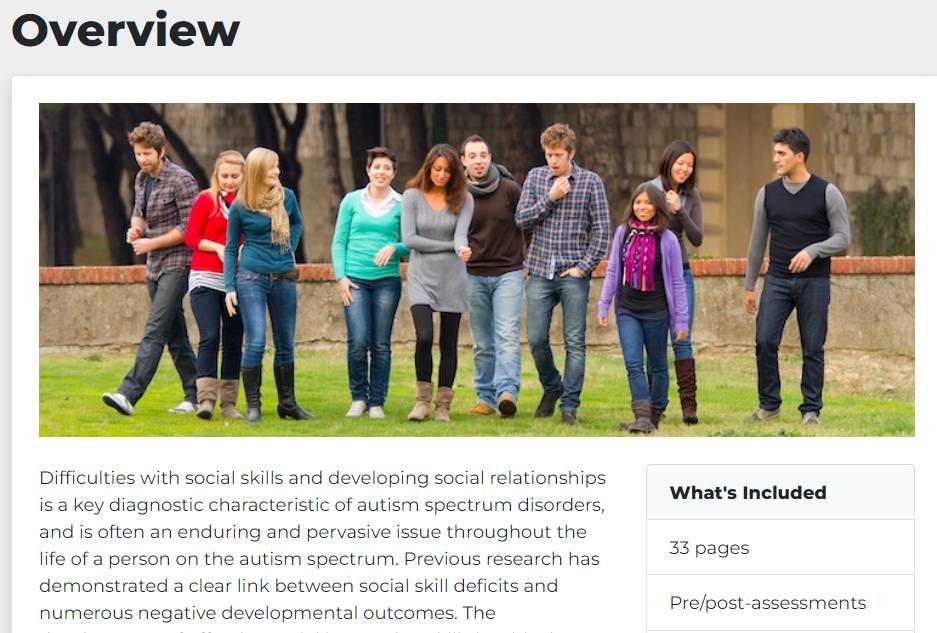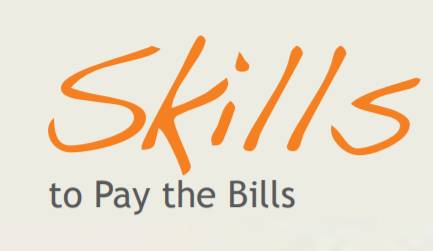Navigation
Empowering Students Introduction
Key Elements
- Supported Decision Making
- Maintaining High Expectations
- Making Informed Choices
- Person-Centered Planning
- ►Social Emotional Learning
Resources: Empowering Students
It is important to acknowledge the social emotional learning (SEL) needs of students to and ensure they have the skills needed to be successful in a postsecondary educational setting or workplace. Students with disabilities who have well-developed social emotional skills are more likely to be able to successfully navigate employment, community, and postsecondary education settings. Students can participate in social emotional learning programs to help acquire critical skills needed for more positive outcomes. Some of these skills core to SEL include identifying emotions, self-management, problem solving, positive and prosocial social behavior, empathy, among other skills (CASEL, 2022). In a meta-analysis conducted by Mahoney et al., 2018, SEL programming demonstrates improved long and short term outcomes, supporting the idea that SEL skills are foundational and support the whole child.
OCALI - Overview of Social Skills Functioning
OCALI-Overview of Social Skills Functioning: Research in social neuroscience increases our understanding of the development of social and emotional competence in the classroom. Understanding how social connections impact our brains and how educators can consider engagement through a social, emotional and cognitive system provides opportunities to socially emotionally engage students. The outcome from this session will provide a practical inquiry tool for educators to discover what’s working in their practices to enhance student engagement. Resources will be covered from the Social Emotional Engagement Knowledge and Skills (SEE-KS) framework that provide educators with a focus on ensuring learning strategies to promote access, engagement and expression of learning.
User engages in interactive module to enhance knowledge and understanding of social skills functioning, the need for social skills, and how to program for social skills.
Related Learning Activities:
- Set up a free OCALI account.
- Complete OCALI, Overview of Social Skills Functioning and Programming (AIM Module; 1.5 hours).
- Complete OCALI, Social Skills Groups (AIM Module, 1.5 hours).
- Complete the OCALI, Social Emotional Engagement in Learning-A Universal Design for Learning with Emphasis on Social and Emotional Engagement video (28:20).
- Think about how you can implement concepts into transition planning.
- Write down five new concepts you learned from completing the activities above.
U.S. Department of Education-Skills to Pay the Bills
U.S. Department of Education-Skills to Pay the Bills: This material covers soft skills needed for obtaining and maintaining employment. This series includes a facilitation guide, lessons for students by topic, interactive activities, and videos. Topics covered include: Communication, Enthusiasm and Attitude, Networking, Teamwork, Problem Solving and Critical Thinking, and Professionalism.
Related Learning Activities:
- Go to the Soft Skills to Pay the Bills web page.
- Download the document.
- Review the Introduction Materials: Introduction and Activity Layout. There are other optional documents if user is interested in reviewing
- Review all soft skills training information, key messages, curriculum, and activities in each soft skill area: communication; attitude and enthusiasm; teamwork; networking; problem solving and critical thinking; and professionalism.
- Think about how material may be incorporated into transition planning for autistic students.
Kansas Technical Assistance System Network (TASN) - Resources
Kansas Technical Assistance System Network (TASN) - Resources: Social and soft skills are important in developing relationships and obtaining and maintaining employment. TASN provides information and resources on social emotional competency on their web page. Resources are articles, books, modules, research, and other information. The TASN material relates to peer relationships, social skills interventions, school-based interventions, applications to support autistic students, and other materials to promote social emotional learning.
Related Learning Activities:
- View the Social Skills and Mentoring video (13:51): covers purpose and importance of social skills training for improved overall outcomes, aligns Kansas MTSS, social development, setting up groups/clubs, the need for evidence based approaches and curricula, social emotional character development, mentoring. This webinar explains who social skills groups and mentoring are appropriate for and how to set up the interventions.
- Complete the Tri-State Webinar Series: the WHO, WHAT, WHEN, WHY, and HOW of social skills intervention will be explored during this presentation. It is important to understand that social skills are one of the greatest factors in job attainment. If a student cannot be successful in an interview or relate to co-workers, they are often not successful with employment. As educators, it is important to prepare our students to be successful in the workforce so that they can contribute to our community. By planning and systematically scheduling social skills intervention, we can be assured that social skills implementation is happening on a regular basis. This three-part webinar series discusses the who, where, what, when and how of how to expand social development for autistic learners. Each video includes handouts and objectives.
- Tri-State Webinar: Social Skills: Expanding the World Through Social Development-Your “WH” Questions:
- Review additional TASN Resources supporting social emotional development including: a comprehensive list of Social Competency Resources including program, author, description, and cost if indicated; a comprehensive list of free and cost-based social skills tools and social skills group visuals (ages 3-12).
TASN NOTE: Content that references the integrated nature of academics, behavior, and social skills or tools that are integrated (e.g. protocols and assessment plans) was informed by and adapted from the collaboration with CI3T (Comprehensive, Integrated, Three-tiered Model of Prevention) research team at the University of Kansas (Lane, K.L, Oakes, W.P., et al. 2013-2015)
WAGES (Working at Gaining Employment Skills to Teach Social Skills and Occupational Skills)
WAGES (Working at Gaining Employment Skills to Teach Social Skills and Occupational Skills): This is a job-based curriculum supported by the National Technical Assistance Center for Transition-The Collaborative (NTACT-C) and includes 33 comprehensive lessons and plans in four areas: (a) self-regulations, (b) teamwork, (c) communication, and (d) problem-solving. It is designed to be delivered as part of a 9-week schedule but can be adapted. There is a cost associated with this curriculum.
Related Learning Activities (optional):
- Access the WAGES website.
- Purchase the WAGES package appropriate for your teaching setting.
Els Autism Foundation
This resource is a video defining social-emotional learning (SEL); features of autism, social interaction and communication challenges, peer relationship challenges, fostering social-emotional learning with individuals with autism, self-awareness, self-management and emotional regulation, social awareness, relationship skills, decision making, and interventions.
Related Learning Activities (optional):
- Watch the Promoting Social Emotional Learning in Young Adults with Autism Spectrum Disorder video (38:21).
- Write down three concepts that resonated most with you. Why?
Family Engagement
Social-emotional learning skills go beyond academics and memorizing facts, referring to how students interact with others and perceive themselves. SEL skills can be influenced in the classroom, and also at home. Learning to take the perspectives of others, identify emotions, handle conflict, understand social cues and non-verbal language, and problem-solve can be very challenging for individuals with autism. Through increased focus in these areas and intentional teaching, students with autism can gain greater proficiency in SEL skills. Families can learn to nurture these skills in the home by modeling expected behavior, actively listening, building self-esteem, respecting others, and other strategies. Families and schools can work together to identify skill gaps and determine goals while involving the student in a whole-child approach.
- Edutopia: Social and Emotional Learning: Strategies for Parents
- Els Autism Foundation: Promoting Social Emotional Learning in Young Adults with Autism Spectrum Disorder (video) (38:21)
- PACER: Positive Behavior Interventions and Supports: Supporting Your Child at Home and in the Community (video) (6:59)
- PACER: Positive Behavior Interventions and Supports: How it should be used at home and in school
- Pennsylvania Autism (PAA) ASERT: Social Skills Resources for Individuals with Autism. Information on teaching, how-to guides, workplace skills, dating skills, social events and meeting new people
Navigation
Empowering Students Introduction
Key Elements
- Supported Decision Making
- Maintaining High Expectations
- Making Informed Choices
- Person-Centered Planning
- ►Social Emotional Learning
Resources: Empowering Students


